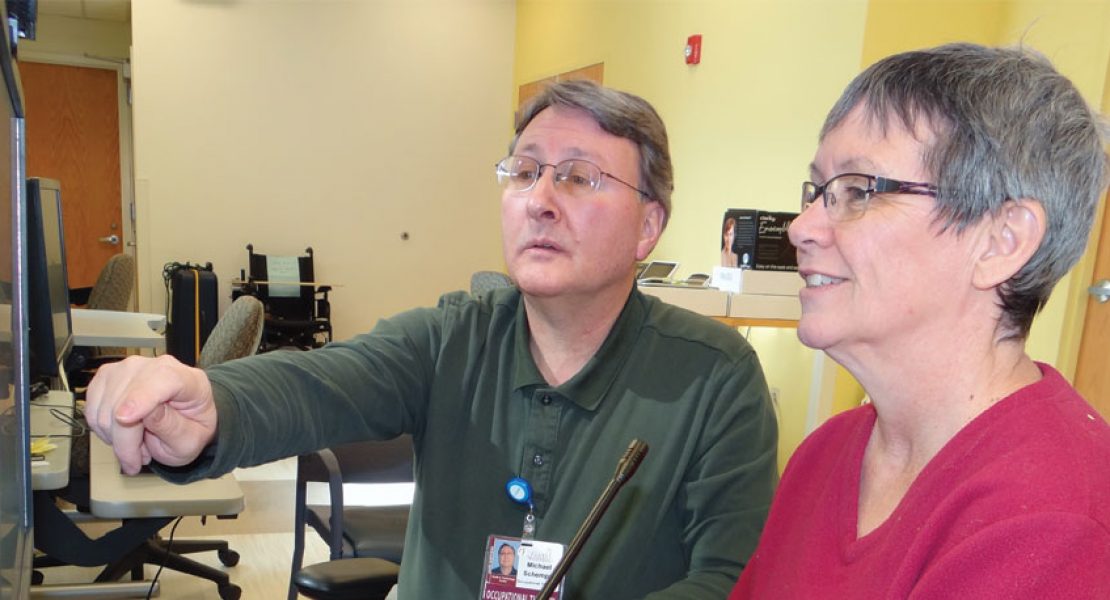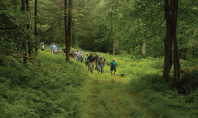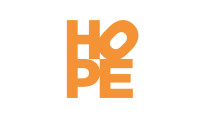Beyond Limits

Good Shepherd’s Assistive Technology Program
The term “assistive technologies” covers a lot of ground. It includes anything that helps people with disabilities become more independent and productive – from a simple pair of reading glasses, to eye-controlled computers.
And at the Harry C. Trexler Center for Assistive Technology at Good Shepherd, you’ll find an array of such devices and a staff of licensed/certified professionals that train clients to use them.
One of eight assistive tech resource centers in Pennsylvania, Good Shepherd also works with the Pennsylvania Initiative on Assistive Technology (PIAT) to provide an equipment “lending library” – clients can try out various devices at home before committing to one – and is represented on the Professional Standards Board of the Rehabilitation and Assistive Technology Society of North America (RESNA).
Good Shepherd does so much in this field that it would take an entire magazine – and more – to cover it all. Here are three key areas.
Computer Access
Computer access is practically a necessity these days – but physical challenges can slam the door on it. The adaptive computer access program at Good Shepherd can re-open it.
John Grencer, Good Shepherd’s administrative manager – technology program, and strategic business planner, said two types of tech are the most commonly used there.
Voice-recognition software – Dragon Naturally Speaking is typical – can interface with the full Microsoft Office suite, enabling users to develop PowerPoint presentations, create and edit Word documents, and utilize Outlook e-mail, and more.
Therapist Mike Schempp, OTR/L, said his training program covers the basics of using the software, as well as using it to execute more complex commands – such as selecting and editing text, cutting/pasting, manipulating drop-down menus, clicking on screen links, and so on.
“It really gives you full control of your computer,” Schempp says, and you do everything with only your voice.”
The second is the LiveScribe smartpen, which – when used with the proper paper – can synchronously record written notes for uploading as well as any ambient audio, for later playback and reference. “It’s a powerful tool for people with various cognitive disabilities,” Grencer said.
Lois Schaeffer has learned to use both. The Danielsville woman’s stroke impacted her former job as an accounts-payable clerk. But now she’s able to dictate and type letters, create Excel spreadsheets, process e-mail, record meeting notes – even search the Internet using voice commands with a smartphone.
She said it took her about 10 hours to become proficient with all the gear, and now uses it regularly at home to keep her skills sharp. She plans to resume her job search soon, adding that “I’m confident that I can use the technology to compensate for my disability.”
Adaptive Driving
Automobiles offer freedom. Unless, of course, you can no longer use your legs. Then you must rely on the kindness and (often conflicting) schedules of others, and every trip must be planned in advance.
But Good Shepherd’s adaptive driving program uses special equipment and hands-on experiences to get disabled drivers back on the road.
Left-foot gas pedals are just that. They’re positioned to the left of the brake, and the driver operates both with the left-foot. Full hand controls take your feet out of the equation entirely. A wheel-mounted knob permits steering with only one hand, while your other hand controls a combination gas/brake lever (pull to go, push to stop).
For people without disabilities, technology makes things easier. For people with disabilities, it makes things possible.
Kenneth Keitt of Bushkill is a 25-year-old ex-Marine who lost the use of his legs in a car accident three years ago. Driving was out of the question, but “I wanted to get my life back,” he said.
So he enrolled in Good Shepherd’s driving program. Twice weekly for two months, he and his instructor practiced in a dual-control car, learning to navigate everything from quiet city streets to roaring highways. Keitt gained confidence quickly and soon resumed his old routines. “I get myself to the gym early in the morning, then drive to Allentown for physical therapy,” he said. “Afterward, I go to my classes at Northampton Community College.
“Before I resumed driving, I was less motivated to go to my therapy and doctor appointments – all that waiting, and relying on other people,” he said. “Now I have more options, and I’ll see more benefits in the future.” He’s making up for some lost time, too. “My wife can’t drive at night – but now I can, and I do!” he said.
Augmented Communications
Sometimes people can’t communicate with speech, because of neurological or physical impairments. But Good Shepherd’s Augmentative and Alternative Communication (AAC) Program can provide other communication pathways.
“Our clients can learn many technologies, ranging from simple card-based systems, showing pictures or letters, to very sophisticated infrared and eye-gaze technology,” Grencer says.
Those last two are especially amazing. IR devices allow users to control a computer via head movements; eye-gaze is just as it sounds – the computer captures reflections from your eyes and determines your commands, based on where you look on the screen.
“Stephen Hawking uses eye-gaze technology to communicate,” Grencer said. “You can see how it works in ‘The Theory of Everything.’”
Potential clients’ difficulties (and their severity) are evaluated by a licensed therapist, who then determines the most appropriate approach. Grencer said there is plenty of intense, one-on-one instruction with the equipment. “If necessary, we can work with other family members, too,” he said.
The Good Shepherd program also provides training and tech for adaptive wheelchair seating and mobility, environmental control, and pediatric assistive technology – and all of it reflects its unofficial motto: “For people without disabilities, technology makes things easier. For people with disabilities, it makes things possible.”
For more information on the many forms of technology and training available through Good Shepherd, visit goodshepherdrehab.org/about/technology-good-shepherd.















